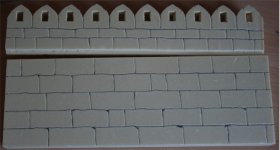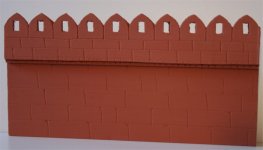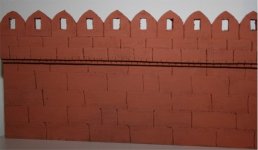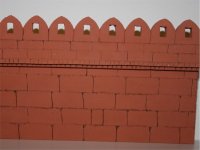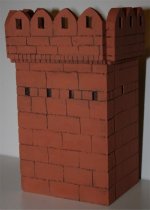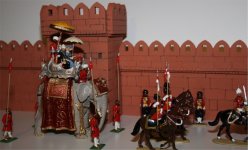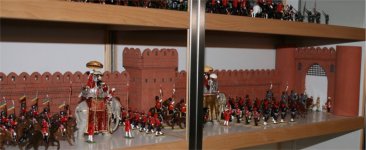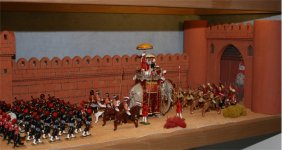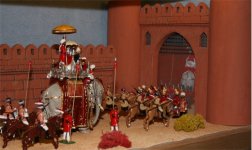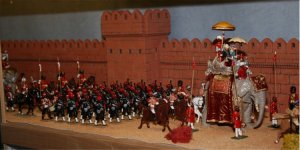Mardasson
Sergeant
- Joined
- Sep 14, 2008
- Messages
- 644
Hi All,
Since I joined this forum I've been really impressed by the dioramas and figures displays of other members.
The more I looked at these pictures, the more I found my troops a bit sad in their bare shelves.
So I decided to built some background to display them and here is my first try : an indian wall to put behind my Durbar display. Well at least the first section of the wall as I will need some of them .
Before I make the other ones I'd like to receive advices from forum members as I see that I could improve the result a lot.
I used foam (as I've seen made on the forum) marked with a ball pen and painted with a paint usually used for wall (real ones).
Here are 3 pictures : the 2 part of the wall cut but before assembly, the painted wall with and without figures.
My questions (not exhaustive list) are:
Thanks !
Michel
Since I joined this forum I've been really impressed by the dioramas and figures displays of other members.
The more I looked at these pictures, the more I found my troops a bit sad in their bare shelves.
So I decided to built some background to display them and here is my first try : an indian wall to put behind my Durbar display. Well at least the first section of the wall as I will need some of them .
Before I make the other ones I'd like to receive advices from forum members as I see that I could improve the result a lot.
I used foam (as I've seen made on the forum) marked with a ball pen and painted with a paint usually used for wall (real ones).
Here are 3 pictures : the 2 part of the wall cut but before assembly, the painted wall with and without figures.
My questions (not exhaustive list) are:
- What kind of foam to use? With this one the result of the ball pen is different vertically than horizontally.
- How to cut curved forms in the foam ? That was the hardest part and the result is not what I expected.
- How to make the stones joints more realistics ?
- How to achieve clear cut holes in the wall ?
- How to avoid the small grains in the foam to be visible ? (instead of a clear cut)
- .....and any other advice
Thanks !
Michel
Attachments
Last edited:


